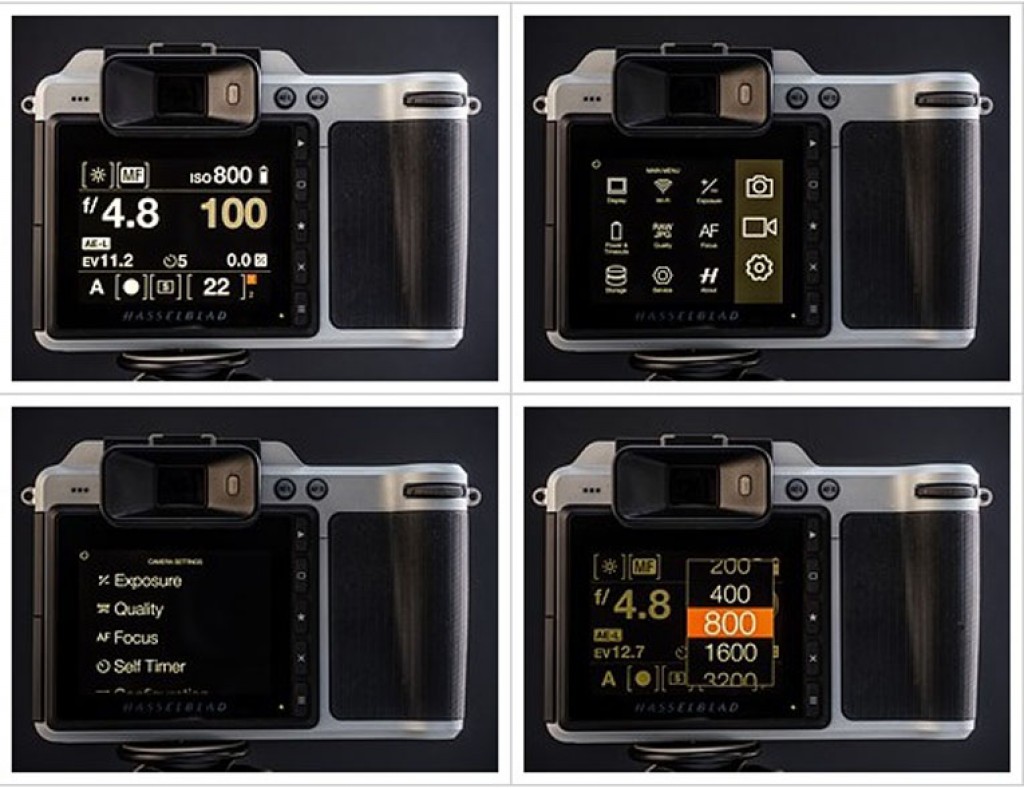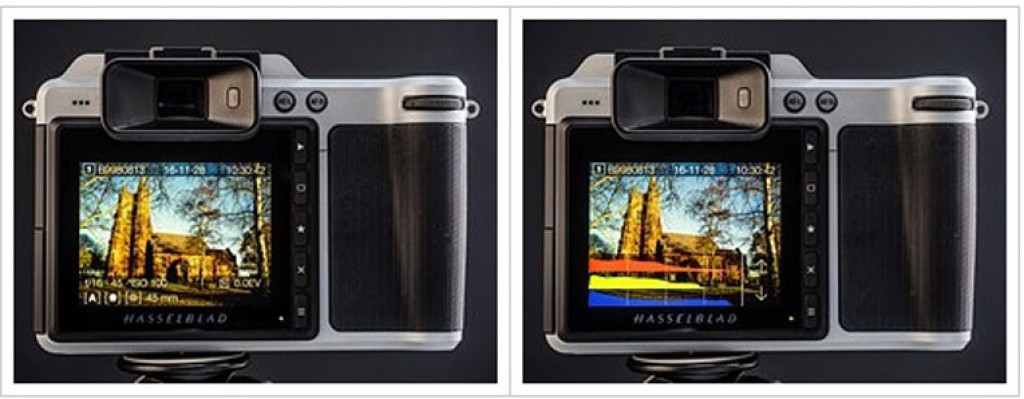
Hasselblad’s X1D-50c caused quite a stir when it was announced over the summer, as its mirrorless design and relatively tiny size defied what we thought we understood about the relationship between sensor size and body bulk in digital cameras. All previous digital medium-format models, other than the Leica S series, have been DSLRs with spacious mirror box housings and forward projecting architecture, but the X1D-50c breaks that mold and harks back to the Mamiya 7/Bronica RF compact rangefinder style. More exciting perhaps is the adoption of the features that we associate with mirrorless compact system cameras, such as touch focusing and an electronic viewfinder, that bring this usually lumbering format into the modern age.
Although the price of the system is higher than those centered around 35mm-style DSLRs, it is also a good deal less than we have come to associate with the 6×4.5cm digital format. The combination of the X1D’s design, features and price made the camera popular immediately. Hasselblad has said that it took more orders in the first ten days than it had expected to take for the year – but now, of course, it has to actually deliver the product to those who pre-ordered it. My understanding is that it is almost ready and I’ve been able to shoot for a short while with the latest pre-production X1D with a 45mm F3.5 lens.
The camera itself is finished but the firmware is still being added to and refined. As such, this article should give you a good general idea of what the camera will be like when it is all done and a pretty clear idea of the image quality we can expect from the finished product.
Body and handling
The Hasselblad X1D-50c isn’t all that much bigger than a Panasonic Lumix GH4 and it will displace less water than the Nikon D810 (don’t try that at home). Size-wise, then, it feels very much like a standard DSLR. The grip is well pronounced which makes the camera very comfortable to hold and to carry, and which makes it feel secure in the hand. The controls feel quite chunky, deliberate and designed to reduce the chances of pressing something by accident. Although the dials are in slightly different places it seems as though they and the shutter release button came out of the same parts bin as those used on the H6D body. These exaggerated features lend the X1D-50c the feel of a big camera but without the size.
I’m pleased Hasselblad has adopted new buttons for the top plate instead of the slightly spongy ones used around the info panel LCD of the H6D, and it has changed the feel of those running down the side of the rear screen. The exterior of the body houses only nine control buttons plus a depth of field preview and the on/off button, so the space feels un-cluttered and simple to navigate.

The menu system is very much the same as that used in the backs for H6D, with bold icons and a large shouting print that will require reading glasses less often than the GUIs of most DSLRs. All the features are activated by touch and options can be scrolled through using the touch screen or the traditional control wheels.
Those used to traditional DSLR and CSC menus might find that of the X1D-50c sparsely populated when it comes to features and options – and it is. The menu will be gradually fleshed out as Hasselblad develops the camera, but don’t expect it to have the same number of options as a regular DSLR.

The 3″ rear LCD is clear and bright, and its 920k-dot resolution makes the display useful when focusing manually. The EVF is also very clear and its 2.36 million-dot display feels very detailed. The firmware version I was using didn’t allow playback in the viewfinder so I couldn’t check to see what that would look like, but Hasselblad tells me that will be coming soon in a further update.
General performance
Hasselblad says the AF system has been designed to prioritize accuracy over speed, though the company’s designers are still working on making the system faster. The system in place at the moment feels about as fast as I would expect from a medium format camera, which means it isn’t as reactive as most DSLRs, but it’s a lot quicker than focusing manually.

While I was using the camera, new firmware gave me a taste of the X1D’s touch AF functionality. Holding the focus button down for a second gave me a choice of 35 AF points arranged in a grid across most of the screen. Touching a square makes that point active, and a further press of the shutter release or AF button activated the focus to fall on whatever was under that point. It seems very good and while the AF points can’t change size at least they are well spread across the image area. This feature is still in beta.
I was impressed with the camera’s metering system which appears consistent and reliable in a range of conditions, and the flash metering seems to work well too. Hasselblad has borrowed the pin layout from Nikon’s flash system, and while I was able to test using hotshoe guns of a range of makes I couldn’t get my Phottix TTL radio unit to work with it off-camera – though Hasselblad says the Profoto B1/2 system does already work. There is no sync socket, so all control for off-camera flash will be via remote systems in the hotshoe or an adapter.
Image quality
I’ve used this sensor on a number of occasions in the Phase One IQ250 and Hasselblad’s H5D-50c and have been impressed with it every time. I have no reason to believe the image quality from the X1D-50c will not be at least as good, and certainly the samples I shot with it demonstrate that we have some great resolution and dynamic range to look forward to. With such a large sensor, and the ability 50 million pixels gives for magnification, there is little room for focusing error, but the amount of detail that it is possible to record is fantastic.
The dynamic range also allows for plenty exposure latitude and curves adjustments before tones begin to separate and before noise becomes an issue.
I don’t know if Hasselblad has finished tuning the sensor’s color, but I have been very happy with skin tones and the way a wide range of shades have been rendered. The images here have been processed in Hasselblad’s Phocus software, which seems to bring out what the camera is good at, requiring very little adjustment. The new firmware came with a new auto white balance setting that worked well to find a natural compromise in some quite extreme conditions.
Conclusion
This has only really been a taste of what is to come from Hasselblad. I suspect that building the physical elements of a camera is less than half the battle when creating a new system, as it’s the firmware that delivers the features, functions and ultimately the image quality. It is probably the firmware that creates all the headaches too.
So far though the X1D is really very nice to use, and already produces first class images. Once it is finished I expect that it will be ideal for a wide range of subjects, from still life, to portraiture, to landscape and documentary work. I suspect the only areas where it won’t be ideal is sports and action, or where candid capture demands quick and responsive focus tracking. It is small enough to carry in the pocket of a large coat, light enough that you don’t need a hard case with wheels and it handles much like a 35mm style DSLR.
Hasselblad has acknowledged that the delay in shipping final products is frustrating for those who have pre-ordered the camera, but in discussions with representatives from the company it is clear that they want to get it right first time and not release the camera before it is ready. They have been delayed, they say, by Sony’s sensor production crisis after the earthquake, but also I think by tuning firmware, making sure the features work as well as they can and tackling the sheer scale of the orders that have come in. If the pre-production firmware that I’ve used is anything to go by though, it will certainly be worth the wait.

Sоurсе: dpreview.com









































